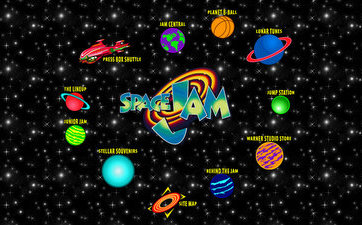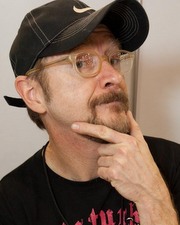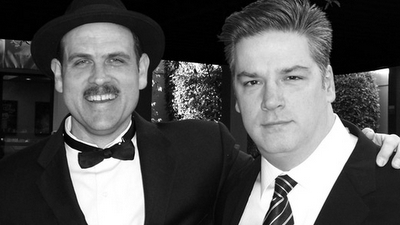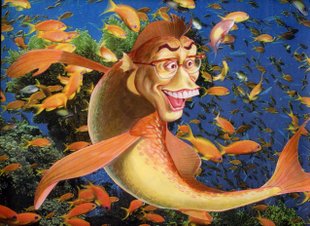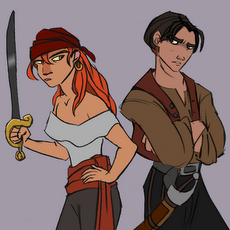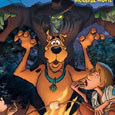In the ’90s, a “Dream Team” of superstars assembled for one of the biggest basketball games of all time. It featured few professional basketball players, however, as many of the NBA’s best and brightest had been stripped of their basketball skills by the nefarious Nerdluck alien race. The game, of course, was the one in the 1996 box office hit Space Jam.
Warner Bros. developed the flick after a series of Nike ads paired NBA superstar Michael Jordan with Bugs Bunny from 1992 to 1993. Viewers responded to this team-up of “Air Jordan” and “Hare Jordan” with overwhelming praise. Thus, Warner Bros. created a full-length follow-up, returning the Looney Tunes to the big screen.
Sixteen years later, Space Jam remains popular as a cult classic, its fanbase ever increasing. Headlines were made in December 2010 when the online community discovered the film’s antiquated website was still active. Last August, LeBron James of the Miami Heat sent news sites gossiping when he suggested on Twitter that he should star in Space Jam 2.
The official website for Space Jam, online since 1996
But what exactly happened to the original plans for Space Jam 2, in 1997? Considering Space Jam‘s gross of $230 million worldwide, one might suspect a sequel would have been a sure thing. Hence, why haven’t Bugs and Michael re-teamed for a rematch?
Animator Bob Camp knows the answer. He found it when Space Jam 2 was cancelled only a few weeks after its pre-production began…
In 1989, University of Texas alum Bob Camp joined Warner Bros. as a storyboard artist for another Looney Tunes project, Steven Spielberg’s Tiny Toon Adventures. In the series, Looney Tunes staples such as Bugs and Daffy were teachers at Acme Looniversity, instructing a fresh group of characters including Buster and Babs Bunny, Plucky Duck and Hamton J. Pig.
After less than a year, Camp left Tiny Toons to work with John Kricfalusi, commonly known as John K., on the pitch for Our Gang or Your Gang, in which a live-action host presented an assortment of cartoons, each a parody of popular cartoon scenarios. Camp and Kricfalusi shared an office with animation historian Jerry Beck, in the building that would eventually house Kricfalusi’s production company, Spümcø. Beck’s Streamline Pictures partner Carl Macek arranged for Kricfalusi to meet with Vanessa Coffey, Nickelodeon’s Vice President of Animation Production at the time. Of the characters in Gang, Coffey singled out a certain dog-and-cat duo for their own series, Ren & Stimpy.
Bob Camp
“We got away with murder on that show,” says Camp of Ren & Stimpy‘s edgy humor, calling the relationship between Spümcø and Nickelodeon “contentious.” After Nickelodeon dismissed Kricfalusi in September 1992, Camp took over as director of Ren & Stimpy until the show’s finale in 1995.
Camp notes Ren & Stimpy as a high point in his career. “Everything else kind of pales in comparison,” he says, particularly when thinking about the series’ early days. “There were a lot of crazy, fun, weird people working on it, and working with John K. is about as weird as it gets.”
As Ren & Stimpy wrapped up, the animation industry was abuzz over a “looney” new project at Warner Bros.: Space Jam. The road to Space Jam had been interesting, to say the least. It began with the revitalization of a classic franchise before taking a sports-themed turn. In 1987, Warner Bros. released The Duxorcist as the first theatrical Looney Tunes short since Injun Trouble in 1969. Fans were likewise excited to see Bugs’ cameo in Robert Zemeckis’ 1988 animated/live-action comedy Who Framed Roger Rabbit, as the “wascally wabbit” joined a slew of other famous cartoons.
But it wasn’t until January 1992 that Bugs’ comeback skyrocketed, thanks to a collaboration with the world’s then-most famous athlete, Michael Jordan. During Super Bowl XXVI, viewers were thrilled to see the two titans in their own respects play b-ball against a team of bullies in the Hare Jordan spot for Nike, imagined by Wieden+Kennedy creative director Jim Riswold. “This could be the beginning of a beautiful friendship!” said Bugs to Jordan at the end of the ad. Indeed, the relationship was so beautiful – and fiscally rewarding – that Warner Bros. reunited the two for a 90-second ad during Super Bowl XXVII the following year. In 1995, McDonald’s figured Bugs shouldn’t have all the fun on the court and introduced a line of collector’s cups pairing Daffy, Taz, Sylvester, Yosemite Sam, Wile E. Coyote and Road Runner with NBA stars such as Charles Barkley and Patrick Ewing.
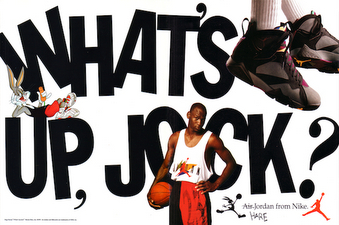
A 1992 Hare Jordan print ad for the Air Jordan VII sneakers
Warner Bros. couldn’t help but notice the massive success those promotions drew. People appeared more interested in the Looney Tunes than they had been in years. At the insistence of Jordan’s longtime agent David Falk, Warner Bros. placed Space Jam in motion, blending the Looney Tunes’ traditionally animated world with Jordan’s live-action one. Joe Pytka boarded the project as director, having helmed the Directors Guild Award-nominated Hare Jordan spot as well as iconic ads such as the PDFA’s This Is Your Brain on Drugs and Pepsi’s Uh-Huh starring Ray Charles. Bruce W. Smith and Tony Cervone agreed to direct the film’s animation, with Ron Tippe producing. Of course, screenwriters Leo Benvenuti, Steve Rudnick, Timothy Harris and Herschel Weingrod needed an epic reason for an entire Looney Tunes movie to revolve around a basketball game. Thus, they wrote a storyline in which the characters call upon a retired Jordan after staking their freedom on a game against the Nerdlucks, who have stolen NBA stars’ skills to become the brutal Monstars.
Camp wasn’t impressed with the idea behind Space Jam. Besides, he and Ren & Stimpy talent Jim Gomez were already hard at work developing a new television series for Nickelodeon, Kid Komet and Galaxy Gal.
The stars of Bob Camp’s unproduced show Kid Komet and Galaxy Gal
Space Jam supervising animator Jim Kammerud and animation production manager Leslie Hough stopped by Camp and Gomez’s office. “I remember when I heard about it,” Camp recalls. “I said, ‘Wait a minute, you mean they’re making a movie out of that Nike’s ad?’
“They said, ‘Yeah.’
“And I go, ‘Nah, I’m not interested.'”
Nonetheless, audiences were very interested, as Space Jam collected $230.4 million worldwide. While critics were divided on the movie, it still received an Annie Award in Technical Achievement in addition to Annie nominations for Best Animated Feature, Directing and Producing. Furthermore, Space Jam made $1.2 billion in merchandising, while launching a 6x Platinum soundtrack headlined by R. Kelly’s Grammy-winning single “I Believe I Can Fly.”
Hence, Space Jam 2 appeared to be a no-brainer. But Warner Bros. had one stipulation: the involvement of Michael Jordan. Although Space Jam had been successful, its inflated budget of at least $80 million was a cause for concern, since the film had grossed just $90 million domestically. Warner Bros. execs assumed audiences would be less interested in a Space Jam sequel without one-half of the Hare Jordan duo. But as long as Jordan was involved, Space Jam 2 was a go.
Warner Bros. was pleased when a producer – whom Camp declines to name – confirmed he had signed Jordan onto the project. Thus, the studio began assembling key players for Space Jam 2 in 1997. Pytka returned to direct the sequel. However, Cervone had a new animation co-director, Spike Brandt, known for directing episodes of Animaniacs as well as animating for the original Space Jam. Jeff Siergey, a supervising animator for Space Jam, also boarded the sequel.
Spike Brandt and Tony Cervone
Cervone and Brandt soon approached Camp, already working in-house at Warner Bros. as a storyboard artist, about providing character designs for Space Jam 2. This time, Camp was more receptive to the idea of working on a Space Jam picture. “When the first Jam came around, I was focused on getting my own projects off the ground,” Camp explains. “When Tony and Spike mentioned the second film, I was already working at Warner’s, and it sounded like fun working with them.”
Camp was surprised at some of the meetings to which he was invited. At one of them, he learned not to question Pytka, a director known as much for his temper as his visionary commercials. “I pitched him an opinion in a meeting, and he yelled at me, ‘Who the [expletive] are you?!'” Camp says.
“I was like, ‘Uh, I just work here.'”
Cervone tasked Camp with designing the villainous Berserk-O! and his henchmen, O!-No and O!-Yes. Camp had no clue what Space Jam 2 would be about, since its screenplay had yet to be completed. In fact, he didn’t even know Berserk-O!’s motive for despising the Looney Tunes. “They didn’t really talk to me about it,” Camp says. “They just said draw him.” Camp drew Berserk-O! with a third, enlarged eye on his forehead, inspired by the trademark flying eyeball from Hot Rod artist Von Dutch. “The eye was my ‘eye-dea,'” Camp says. “I thought it would be cool for him to have a eyeball on a stalk growing out of his head, since he was an alien.”
Berserk-O!, the main villain of Space Jam 2
Warner Bros. decided a legendary sports star like Jordan needed a legendary comedic actor for the villain. Early discussions began with Mel Brooks’ management, for the Blazing Saddles star to voice Berserk-O! With that in mind, Camp designed the villain to resemble Brooks, studying freeze-framed shots of the actor from at least five of his movies. But before Brooks could join the film, a stunning revelation arrived: Michael Jordan hadn’t.
According to Camp, the unnamed producer “was saying, ‘Yeah, yeah, Jordan is on.’ But he was lying. The guy didn’t have Jordan hooked up with the project.
“So, the studio said, ‘Well, okay, we’re not doing it.'”
Immediately, Warner Bros. shut down Space Jam 2. The sequel’s production was over before it began. Nonetheless, Camp wasn’t too sad about the announcement, having worked on Space Jam 2 for only a few paid weeks. In fact, he had even questioned the necessity of the sequel. “I felt the whole point of it was – like a lot of sequels – just to cash in on the success of the original,” Camp says. “It wasn’t like it was a great idea that people wanted to make a movie out of. It was just, ‘Hey, Michael Jordan is a cash cow! Let’s milk him for all we can!'”
Berserk-O!’s henchman O!-No
Camp notes his experience on Space Jam 2 has no reflection on the studio’s current regime, since “it was so long ago.” But he is also aware other artists might express more optimism toward Space Jam 2 in retrospect, to avoid possibly burning any bridges. “Those people are probably smarter than I am,” Camp adds. “But I don’t know how to not be honest. I just say whatever is on my mind.”
After Space Jam 2, Camp began working on The Incredible Mr. Limpet for Warner Bros. Produced by Barry Levinson, the film was to be a modern-day remake of the 1964 Don Knotts comedy about one milquetoast man’s ability to morph into a fish upon entering water. Jim Carrey was set to star, reuniting with Ace Ventura: When Nature Calls writer and director Steve Oedekerk. While Knotts’ fish counterpart was hand-drawn, the new film would employ cutting edge technology to place the motion-captured face of Carrey onto a computer animated fish. “They were paying him his full rate, so they wanted the fish to look as much like him as possible,” Camp explains. Unfortunately, the 1998 production’s visual effects were unable to convincingly marry the actor’s face with a CGI body. “It just looked like a monster,” Camp adds. By mid-1999, Warner Bros. would be fishing for another star and director for Limpet, while Camp moved onto Bobby and Peter Farrelly’s Osmosis Jones.
Jim Carrey as Mr. Limpet
Michael Jordan, meanwhile, kept up with his “Space Jam buddies” in a series of TV commercials for MCI (1, 2, 3, 4, 5, 6, 7). The commercials had folks asking why Jordan refused to do Space Jam 2, if he enjoyed interacting with the Looney Tunes. “I don’t think he likes acting,” Camp says. As such, the sequel was still dead – or so folks believed.
While Jordan had no interest in a Space Jam sequel, plenty of other celebrities did. Jackie Chan was one of them, already in the Warner Bros. fold thanks to his Jackie Chan Adventures animated TV series. In August 2001, Chan’s management entered negotiations with Warner Bros., for the actor and martial artist to star in Spy Jam. As if one sequel weren’t enough, the studio also began planning Race Jam starring Jeff Gordon of NASCAR fame. Both projects fell through, for unknown reasons.
Warner Bros. did not want to miss out on the public’s revived interest in the Looney Tunes. Thus, the studio greenlighted Looney Tunes: Back in Action, a standalone feature which would once again pair the hand-drawn characters with live-action stars and settings. Gremlins director Joe Dante came on board, swearing to make Back in Action the “anti-Space Jam.” Eric Goldberg acted as animation director, while Siergey was hired as a lead animator. Although Cervone sat the film out, his wife, Allison Abbate, joined as an animation producer.

Michael Jordan’s brief cameo in Looney Tunes: Back in Action
Fresh off Cats & Dogs, Camp received a call asking if he would like to be involved with Back in Action as a storyboard artist. He said yes, grabbing the opportunity to work with Dante. “He’s one of my heroes and about the nicest guy you’d ever meet,” Camp says, recalling one of his favorite experiences as attending a barbecue hosted by Dante. Within his pool house, Dante took guests to a screening room adorned with movie memorabilia, from Gremlins puppets to the actual Rosebud from Citizen Kane. “He has one of the largest collections of animated shorts on film, with lots of great Warner Bros. stuff,” Camp continues. “So, we hung out and watched Warner Bros. cartoons with him.”
Back in Action opened in November 2003 to better reviews than Space Jam. “I thought it was a cute movie,” Camp says. “It was fun.” The film even managed to surprise audiences with a brief cameo by Jordan. But Back in Action opened amidst a sea of family-friendly competitors that November, including Elf, Cat in the Hat, Brother Bear and The Haunted Mansion. As a result, the film collected only $68.5 million worldwide, its domestic amount being a paltry $21 million against an $80 million budget. Any plans for a Back in Action sequel were squashed instantly.
Camp left Warner Bros. after Back in Action. In 2002, he landed a job at Blue Sky Studios, storyboarding for Robots and Ice Age: The Meltdown. In 2010, he founded Boblab with Mark Greenbaum to create show and game concepts, including the mobile app game Tanks of Fury for Iversoft Solutions. Today, Camp acts as a storyboard supervisor for the Nick Jr. series Bubble Guppies. With a chuckle, he recognizes the irony of being back at Nickelodeon despite his “contentious relationship” with the network during the days of Ren & Stimpy.
The Looney Tunes, in the meantime, made a slow-but-steady comeback after Back in Action. If that film’s fiscal failure led Warner Bros. to believe people no longer cared about the characters, the studio was gravely mistaken. In February 2005, the first image from the Kids’ WB! series Loonatics Unleashed went online, sparking an outcry from Looney Tunes fans.
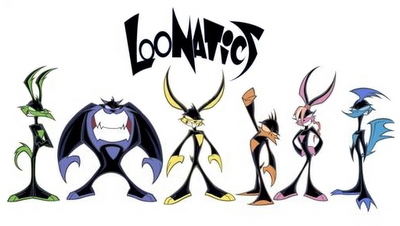
The controversial original designs for the Loonatics
Set in the year 2772, the show revealed the descendants of Bugs, Daffy, Lola, Taz, Wile E. Coyote and Road Runner. Its anime-inspired, menacing designs removed the characters’ pupils and replaced the curvatures of their ancestors with sharp points, making star Buzz Bunny’s ears look more like horns. After the viral success of 11-year-old Thomas Addams’ online petition to “save” the Looney Tunes, Warner Bros. gave the Loonatics cuddlier makeovers. The experience taught Warner Bros. a valuable lesson: people young and old still loved the Looney Tunes.
In 2010, Warner Bros. launched an initiative to refresh the Looney Tunes brand. Despite the cancellation of Space Jam 2, Cervone and Brandt would play an important part in the Looney Tunes’ future, producing a new television series and several computer animated theatrical shorts. The Looney Tunes Show debuted on Cartoon Network in May 2011, placing the characters in sitcom situations. Concurrently, the network re-added classic Looney Tunes shorts to its daytime schedule. The first CGI theatrical short, Coyote Falls, preceded the film Cats & Dogs: The Revenge of Kitty Galore in July 2010. Subsequent short Rabid Rider followed in December 2010, attached to Yogi Bear. I Tawt I Taw a Putty Tat played in front of Happy Feet 2 in November 2011, while Daffy’s Rhapsody preceded Journey 2: The Mysterious Island in February 2012.
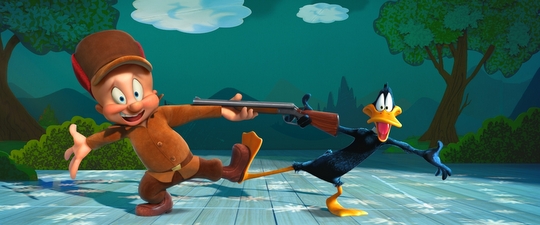
Elmer Fudd and Daffy Duck in the 2012 short Daffy’s Rhapsody
As for the gang’s feature-length adventures, two projects unlike any prior Looney Tunes movie were announced in October 2010. The first was a live-action/CGI comedy – in a similar vein as Garfield – centered on the romantic skunk Pepé Le Pew, for whom Mike Myers would supply the voice. The other project explored the daily routine of the fictitious mail-order company Acme Warehouse, whose defective gadgets have nearly killed Wile E. Coyote for more than 60 years. Pitched by Kevin and Dan Hageman, the Acme film would have been devoid of any Looney Tunes. Like Wile E. Coyote after being crushed by a boulder, neither project got off the ground.
In September 2012, former Saturday Night Live performer Jenny Slate signed a deal to write a new animated/live-action Looney Tunes movie produced by David Katzenberg, Dark Shadows scribe Seth Grahame-Smith, Harry Potter franchise producer David Heyman and his Heyday Films president Jeffrey Clifford.
Time will tell if any upcoming Looney Tunes project can outmatch the one-two punch of Hare Jordan and Space Jam. Whatever film does reach theaters, it might become “the next Space Jam” in popularity, but it probably won’t be Space Jam 2. While fans and LeBron James might want the sequel, Warner Bros. seemingly does not. New adventures surely await Bugs and his merry, melodic cohorts. But as for the Space Jam franchise, it appears, as Porky Pig might say, “That’s all folks!”



